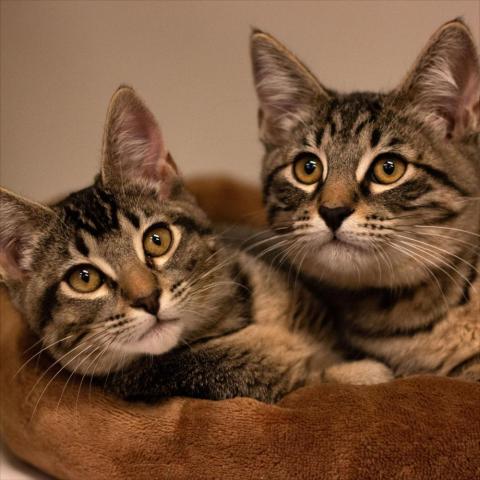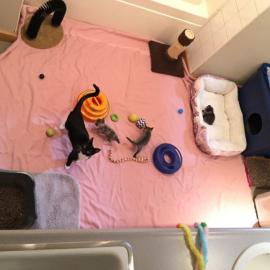Cat Foster Care Handbook
Welcome to the cat foster care program with MCAS. Every year the shelter takes in about 2,100 adult cats. Many of these cats have illnesses, injuries or are scared strays and require some tender loving care. We rely on our foster families to help us heal and recover these animals as they transition to a new and healthy life. For some of our cats we ask our foster families to give them their final home and to fill it with love and warmth. Fostering can be challenging at times but the rewards are great and we could not do it without our foster families.
Thank you from the MCAS team for becoming a foster parent!
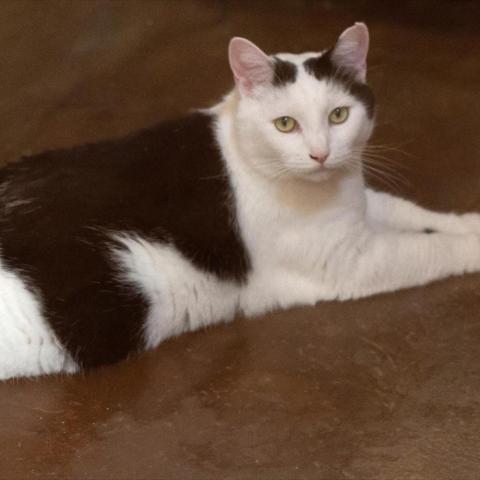
Table of Contents
- Notification
- Pickup
- Follow-up Appointments
- Adoption
- Feeding
- Cleaning Up
- Creating a Safe Haven
- Not Using the Litter Box
- Overarousal
- Set Up
- Handling
- Getting Ready for Adoption
- What If They Don’t Come Around
- Diarrhea
- Vomiting
- Fleas
- Ear Mites
- Upper Respiratory Infection (URI)
- Ringworm
- FIV/FeLV
- Chronic Renal Failure
- Hyperthyroidism
- For emergencies between the hours of 8AM and 5:30PM:
- For emergencies between the hours of 5:30PM and 8AM:
- Not Immediately Concerning - Appropriate to monitor
- Non-Emergency - Contact Animal Health at foster-medical-help@multco.us to see if an appointment is needed.
- Emergency - Requires immediate attention - See “Emergencies” on previous page for guidance
- Q: Can I let my foster Cat interact with my personal pets?
- Q: How much time will I need to dedicate to fostering cats?
- Q: How does medical treatment work with an MCAS foster pet?
- Q: How long will I be fostering each pet?
- Q: What are the common reasons that cats need fostering?
- Q: What should I do if my foster cat bites someone?
- Q: What should I do if my foster cat escapes?
- Q: What if I want to adopt one of my foster cats?
- Q: What if one of my friends or family members wants to adopt?
- Q: How do I get started?
Fostering Process
Notification
A request for the cats that are in need of foster will be sent out in an email as the need arises but generally once or twice a week. Interested parties can respond to the email or call the Foster Coordinator.
The Foster Coordinator will also maintain a list of open foster homes to contact directly when a match comes up. Please notify the Foster Coordinator of any particular interest.
Pickup
You will make an appointment with the Foster Coordinator to pick up the cat. Bring your carrier with you and check in at the front counter when you arrive.
You will be asked to sign a foster agreement and be provided with paperwork including pertinent medical and behavioral records, medications.
Follow-up Appointments
The need for follow up appointments will vary with each individual cat. Some may need to be seen quite often and others as infrequently as once a month. For follow up medical appointments, please contact Animal Health at foster-medical-help@multco.us. For all other appointments, contact the Foster Coordinator at foster@multco.us.
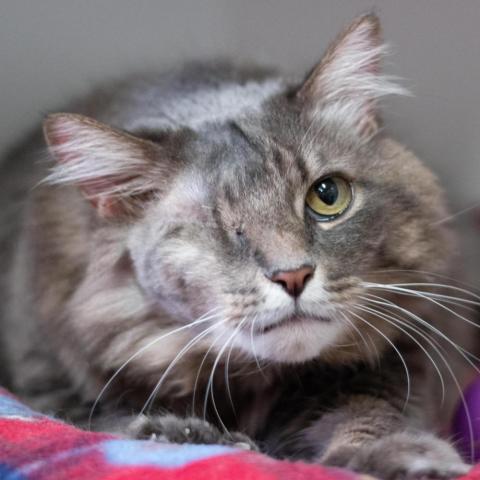
Adoption
Cats that are in foster care for a medical reason will need to be cleared by Animal Health prior to being made available for adoption. Generally speaking, these cats will be returned to MCAS for adoption after being cleared at their recheck appointment. Cats that are in foster care for a behavior reason, will be made available for adoption at the discretion of the Feline Specialist or the Foster Coordinator. The determination at that time will be made whether they should return to MCAS or stay in the foster home for adoption. Once cleared for adoption, foster parents are encouraged to network their animals. All interested parties will need to come to MCAS for an adoption counseling.
Prior to an animal being made available for adoption either at the shelter or from your home, provide the Foster Coordinator with a clear photo and a biography for the website. The biography should include information about their ideal home setting and some of their great qualities or quirks. Include information about how they are with other pets, if known, their exercise needs and their unique interactions with you. Write the biography in the first person to better grab the attention of the potential adopter.
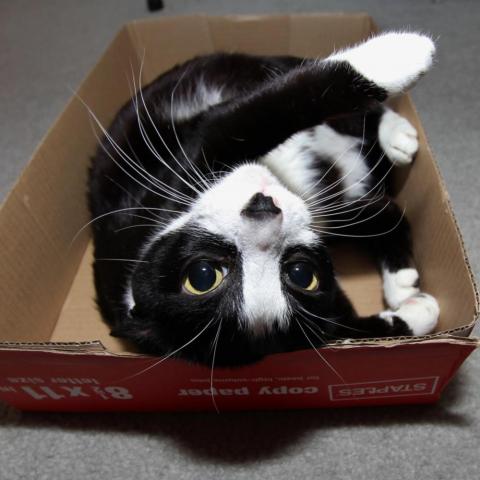
Adoption Promotion Tips
- Create a short (~30 seconds) Youtube video and email the link to the Foster Coordinator to load on the website
- Email the Foster Coordinator new photos-a different photo every week or two is ideal.
- Email the foster Coordinator a modified bio-focus on other traits or try a new wording.
- Print posters and put them up at local businesses
- Social media-utilize, Facebook, Instagram, Twitter etc.
Fostering Basics
Feeding
Your foster cat should have access to a good quality dry cat food at all times, unless otherwise instructed by Animal Health. You can also offer your foster cat canned cat food. Senior, ill, or overweight cats may benefit from additional servings of canned food. Cats should always have access to fresh water.
Treats formulated for cats are a good way to build relationships and encourage positive behaviors and are also ok to give in moderation. Your foster cat should not be given milk or any human food that is not listed in this manual. If you have a cat that is struggling to eat, see the tip box in the Common Medical Concerns section for approved human food suggestions.
Cleaning Up
Prior to bringing home a new foster cat, it is important to clean your foster space. You will want to use a 1 part bleach to 32 parts cold water mixture to wash any hard surfaces including walls and floors. Food bowls, hard toys and litter boxes should be soaked in the solution for a minimum of 10 minutes. Any soft materials, such as towels, rugs and blankets, should be washed on a high temperature with bleach. Any cardboard or other items that cannot be washed should be discarded. Foster cats should only be given access to surfaces that can be disinfected with bleach or discarded. Areas that cannot be disinfected could hold onto germs that could be spread to other animals or even people. Carpet cannot be properly disinfected and we strongly discourage allowing foster cats to have access to it.

Creating a Safe Haven
Foster cats should be kept indoors only and be transported in a secure crate when outside of the home. Upon arrival to your home, even a confident cat may take some time to adjust and should have their space limited for the first two weeks. A small room, bathroom or a large dog crate work well. Create hiding places where the cat can feel safe but you are able to reach them. Vertical space is important as well - placing a table, or a bookshelf, by a window or other place of visual interest, provides an easy and effective perch for cats who feel more confident when they are elevated off the floor. Make sure that food, water and litter are in places that are low traffic. Limit interactions with new people for the first several days.
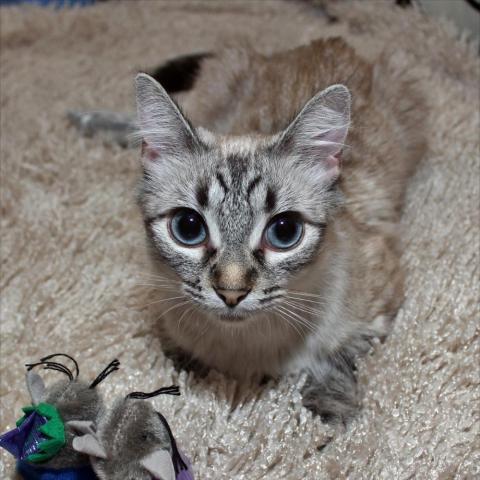
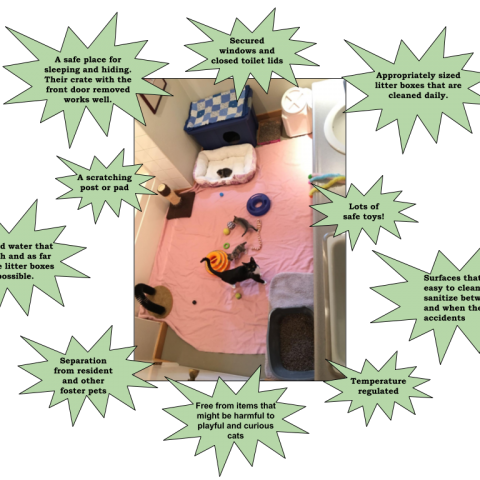
Common Behavior Concerns
It's important to remember that your foster cat has recently been through several difficult transitions. They are feeling unsure of things and even though we know a foster home is a fabulous place, they may still struggle with the transition. Patience is key but the following tips will help with some of the common concerns.
Not Using the Litter Box
There are both medical and behavioral reasons an adult cat may stray from using the litter box. Most reasons are easy to resolve. Begin by determining if the cat is spraying or if it is a case of inappropriate elimination. If there is urine on a vertical surface, you have a cat who is spraying and if the urine is on a horizontal surface, you may have a case of inappropriate urination. Notify the Foster Coordinator immediately of any cases of either.
Spraying is likely the result of stress. A new home (even a really great foster home), the presence of another pet or being recently or still unaltered may all contribute to this behavior. The cat is trying to feel more safe and secure. Begin by assessing the likely cause of the spraying. Confine the cat to a smaller and easily cleanable space, separate from children and other pets.
Inappropriate urination or defecation can also be the result of stress but it may also be a simple dislike for the litter type, litter box location, lack of an appropriate amount of litter boxes, arthritis or a urinary tract infection. To resolve, begin by keeping a clean litter box. Scoop it a couple times daily and completely dump and sanitize it on a weekly basis. Provide your foster cat with more than one litter box, and if possible place one in the area that they are using instead. Use an uncovered litter box with unscented cat litter and if needed try other types of litter to find what they like. For example, you can try clumping, non-clumping, pellets, wheat based, or even soil. There is also Cat Attract litter which has enzymes that will encourage the cat to the litter box.
In both cases, be sure to thoroughly clean the affected area with an enzymatic cleaner that was designed for cat urine. After cleaning, you can utilize Feliway as an added support. Any instances of straining to urinate, blood in the urine or frequent attempts to urinate and not producing a normal amount should be reported to Animal Health immediately.
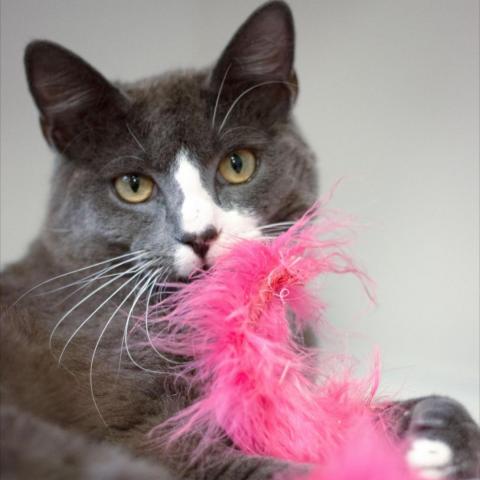
Overarousal
Overarousal may present as a cat who strikes, growls or even bites in response to something that excites them. This may be another cat, a dog or may be as simple as petting. Some cats are more prone to this behavior than others. In response to these behaviors, we should seek to reduce the exposure to the things that cause this response. You can remove other pets or limit petting to a location or amount of time that is more comfortable. Once you understand their threshold, you can begin to work on desensitization. You can use treats or wet food to slowly acclimate the cat to these stimuli. Go slow! For example, use a photo of another cat and then treat. Very gradually increase their exposure to the stimuli, being cautious to stop before they are at their threshold. Keep sessions short and do them several times daily.
Some cats can become over aroused in the form of play. You should never encourage your foster cat to bite or kick at your hands or feet. Use wand or dangling toys to encourage the cat to play appropriately and move them away from your body. Keep play sessions short and end before they become too aroused. Always reward positive interactions and behaviors, and ignore negative behaviors.


Confident Cat Program
The shelter is a busy place for cats. Many cats struggle in this environment and may exhibit extreme fear or even reactivity. Some of these cats are scared house cats who when given a more safe environment are friendly. Others are actually undersocialized cats that may never be comfortable with people interacting with them. Generally a foster home is the best way to determine the difference. By following the below program, we should be able to know the difference in a few short weeks. This program has proven time and again to be successful. If you find that you are not able to move through these steps in about three weeks, contact the Foster Coordinator with an update and a new plan will be put in place.
Set Up
One of the most important components of the program is to have the right set up. Generally a large dog crate, a rolling cage, or a small bathroom are the best places to start. Ideally, the cats should be able to observe normal household activities but not be overwhelmed by them. They should be provided a space to hide so they can take breaks, but make sure that they are not out of reach. Adjust the location of the acclimation area as needed to provide balance. Fearful cats should not have access to the entire house. This will drastically increase the amount of time needed for them to come around and may cause us to assume an inaccurate assessment of their degree of socialization.
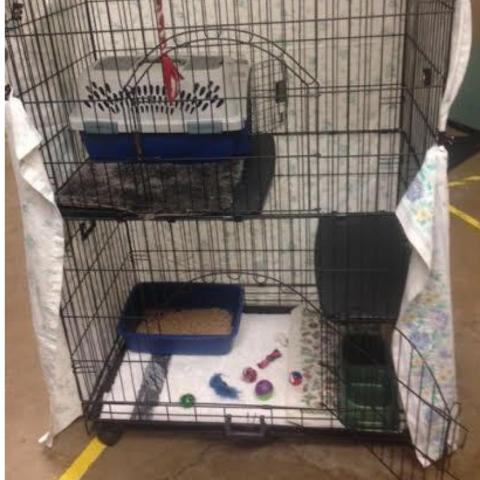
Handling
To begin, offer your foster cat a treat they love-canned food, baby food, tuna oil on canned food etc. and walk away. Strive for three to five sessions a day. Establish a routine that they can predict. After the first several days, begin staying in the area after feeding them. Over the next week, gradually remain closer to their kennel while they eat. If they stop eating, you are staying too close. Continue to stay under their threshold but keep lingering longer until you are able to sit right outside their kennel. Next, try leaving your hand near the food. Then try reaching in for a pet on the face or head. If this step is too much, you can try petting with an inanimate object, such as a wand toy or a back scratcher. Always stop progressing when they stop eating.
Continue these interactions until you are able to comfortably pet them with food. Next, you want to try petting before offering food and give a treat after the touch. Try coaxing the cat onto your lap with food or a toy. Continue to normalize household sounds through these days.
Once the cat is comfortable with you petting and responding positively to it, you can increase their living space. Continue to offer food or toys as an incentive to interact with you and improve the degree of trust.
Getting Ready for Adoption
Once you are able to confidently pet your foster cat, email a description and bio to the Foster Coordinator. Being able to catch her loose in a room, pick her up or have her come to you for snuggle time are not required before listing for adoption. The adoptive family will be counselled on how to continue your plan in their home. We want to provide the adoptive family with a great foundation but also want to empower them to help, so that we can help the next cat in need.
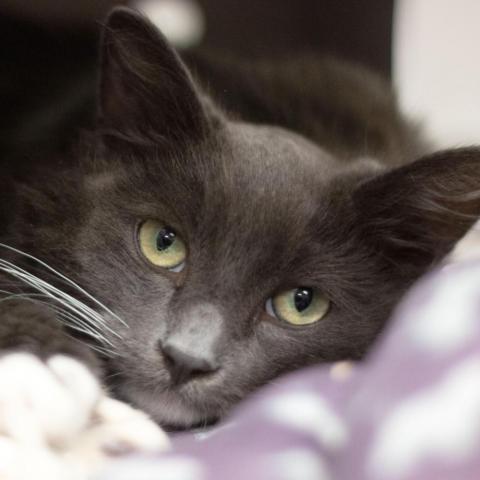
What If They Don't Come Around
Each cat will progress at a different rate but generally speaking you should be able to pet your foster cat by week three even if they do not necessarily enjoy it. If you are not seeing progress at this point, you should contact the Foster Coordinator for tips. The determination may be made to place this cat as a Kitties for Hire. Not all cats are socialized to humans and that is ok, there is a home for those guys too. Following this plan will help us determine the best plan quickly without causing the cat undue stress.
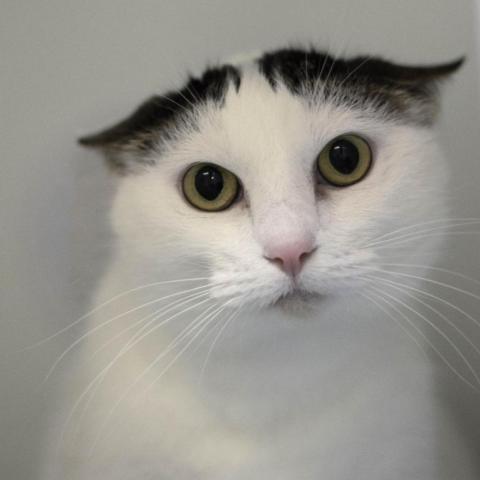
Common Health Concerns
All cats should receive health exams before going into foster care and any known health concerns will be discussed with the foster parent prior to pick up. However, it is possible for symptoms to develop after the cats are taken home. Because of this, it is very important to keep your foster cats in a separate area, with separate bedding and without contact to your other household animals. MCAS is not responsible for treating any other animals in the foster home in the event that something is shared from a foster pet.
It is expected that all veterinary care will be provided by MCAS or an approved emergency veterinarian under an emergency situation only. A foster parent may not take a foster pet to any other veterinarian. No medications, prescription or otherwise, are allowed to be given to foster pets unless previously authorized by MCAS veterinarian staff. Failure to follow this rule may result in no longer being a foster parent with MCAS. Any unauthorized veterinary care will not be reimbursed by MCAS.
Diarrhea
Diarrhea can be caused by a variety of things including a change in diet and stress. Soft stool or diarrhea is to be expected the first couple days after coming to your home. If the stool doesn't improve, it may be indicative of a more serious concern. Animal Health should be contacted if it persists for more than 72 hours or is accompanied with lethargy, loss of appetite or vomiting.
Vomiting
Vomiting may also be the result of stress or diet change and should be monitored. If the vomiting continues for more than 48 hours or is accompanied with lethargy or loss of appetite, Animal Health should be contacted.
Fleas
Whenever possible, your foster cat will be treated for fleas before going home with you. Flea treatment should be applied monthly. Contact Animal Health for follow up treatments.
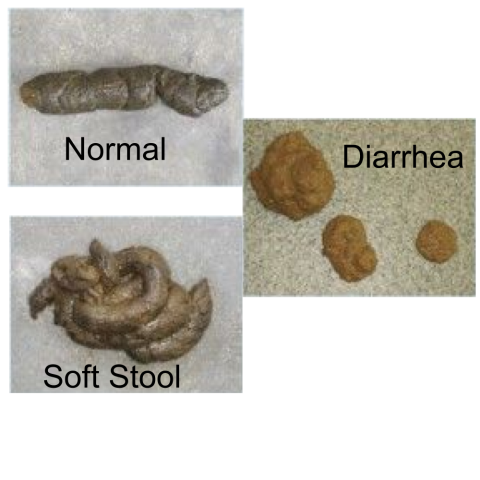
Ear Mites
A cat with ear mites will have crusty black debris in their ears. The ears will often be itchy and may have a foul odor. Treatment is simple with medication, though sometimes more than one treatment is required for complete resolution.
Upper Respiratory Infection (URI)
URI is simply a cat cold. They are generally caused by viruses, but bacterial infections may be involved. Stress can make the cats more susceptible.
URI generally appears as sneezing, discharge from the eyes or nose, congestion, coughing, or swollen eyes.
Mild cases of URI do not need to be seen by a veterinarian. If the cat has clear nasal discharge and is eating, maintaining weight and otherwise acting normally, then an appointment may not be needed. Most mild URIs resolve on their own within seven to ten days. Animal Health should be contacted if the URI has not resolved or if the cat develops lethargy, poor appetite, weight loss, colored nasal discharge, severe congestion or a fever.
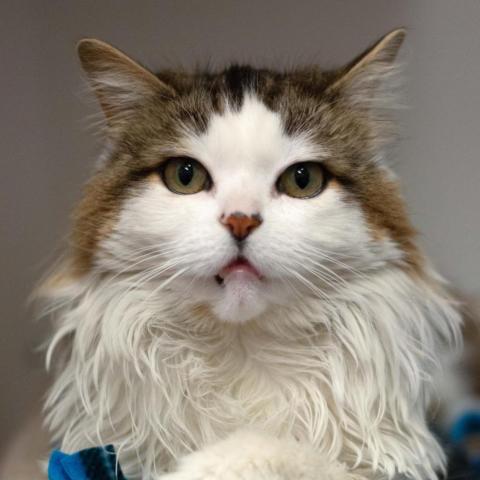
Tips to Encourage Eating
- Increase the odor - cats generally need to smell what they are eating
- Warm canned food a bit
- Add a small amount of tuna or clam juice
- Add low sodium chicken or beef broth (no onions or garlic)
- Offer single meat baby food (no onions or garlic)
- Offer different canned foods with a variety of textures and flavors
- Pet or sit with them - some cats are “social eaters”
- Keep food fresh
Ringworm
Ringworm is fairly uncommon in our population of adult cats. It is a fungal infection and is typically found on the head and legs. The skin will look dry and the hair will be missing. Ringworm is treatable and typically involves medicated baths and an oral medication. It is highly contagious to other animals and humans and can live in the home for very long periods. Contact Animal Health if you suspect that your foster cat has ringworm.
FIV/FeLV
MCAS, in accordance with many local shelters, does not routinely test cats for FIV/FeLV. Testing will be conducted at the discretion of Animal Health. It will be communicated with the foster family when a cat is known to be positive for either. FIV is generally only transmitted through deep fight wounds and mating. FeLV is more easily spread and can include the transmission of saliva through close contact, such as mutual grooming. The virus does not live long in the environment and normal cleaning protocols will eliminate the environmental risk to other cats.
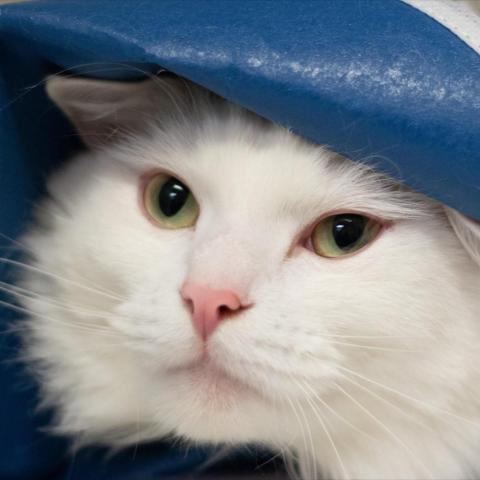
Low Stress Medicating Tips
- Hide the pill
- Cheese
- Wet food
- Baby food
- Liver sausage
- Pill Pockets
- Use your hands
- Wrap the cat in a towel
- Hold the cat’s head and gently tilt it back
- Open its mouth
- Drop the pill on the back of the tongue.
- Close the mouth and hold it shut while you run your hand on their throat or blow gently on their nose until you feel them swallow.
- Follow with food
- Use a pill gun
- This is a tool that will help place the pill in the mouth safely. Ask Animal Health for one and instructions on how to use it.
Chronic Renal Failure
Chronic Renal Failure, also known as kidney disease, is a common condition in older cats and has a variety of causes. Each cat has a different rate of progression and it can be difficult to predict how long the disease will take to progress. Your foster cat is likely to drink and urinate in larger than normal quantities. They may also develop weight loss, poor appetite, decreased energy, anemia and vomiting. A prescription diet is likely to be recommended and will be provided by MCAS. It is essential to make sure these cats have access to water at all times.
Hyperthyroidism
Hyperthyroidism is also common in older cats. It is caused by an abnormally functioning thyroid gland. It can cause excessive drinking and urination, restlessness, vomiting or diarrhea. Cats often lose weight, despite having an eager appetite. Life-long medication is typically required and these cats should always have access to water.

Hospice
MCAS has a hospice program for cats that enter the shelter with a terminally ill condition. These animals may have a variety of medical concerns but are still having a good quality of life. MCAS will provide palliative care for these cats and ask that our foster families provide them with a loving and compassionate home.
Hospice cats will need monthly rechecks at MCAS and may occasionally graduate from the program and be cleared for adoption. At each of your appointments, the Animal Health team will assist with creating the best plan for these cats.
It is common for hospice cats to need subcutaneous fluids and/or medications. Animal Health is available to show anyone the process. We can also have them come to MCAS to receive fluids as needed.
Monitoring your hospice cat's quality of life is important. Cats are exceptionally good at hiding pain and discomfort. As their caregivers, we need to look for the more subtle signs that they may be ready to go. These signs may include: a loss of appetite, significant weight loss, change in litterbox habits, having more bad days than good, difficulty breathing or changes in behavior. Contact Animal Health if you are concerned about any of these symptoms. Animal Health is skilled at making these decisions and are here to talk with you through the process.
All of fostering, but especially hospice care, is a special process and one that takes immense compassion. Please see the Additional Resources page at the end of this handbook for some places for assistance with grief support. Always know that staff are available as well to help you through the harder times of this journey.

Emergencies
For emergencies between the hours of 8AM and 5:30PM:
- Email the medical team at foster-medical-help@multco.us and call 503-988-9075. Leave a message.
- Come to the shelter immediately! Do not wait for a response.
- Please have the animal ID number with you and provide this number at all points of contact whenever possible but do not let it delay you.
For emergencies between the hours of 5:30PM and 8AM:
- If you are unsure if it is an emergency, refer to your foster contact sheet for a list of current foster mentors for guidance.
- Take the pet to one of the following approved after hours veterinary clinic.
Dove Lewis
1945 NW Pettygrove St
Portland, OR 97209
503-228-7281
NW Veterinary Specialists
16756 SE 82nd Dr
Clackamas, OR 97015
503-656-3999
- If possible, bring your foster's medical records with you.
- Notify the clinic that this is a foster pet with MCAS and they will not charge you for the care they provide.
- Notify MCAS as soon as possible that you have taken an animal to an after-hours veterinarian via email at foster-medical-help@multco.us and a call to 503-988-9075. Please include the animal number.
Not Immediately Concerning - Appropriate to monitor
- URI
- Clear ocular or nasal discharge, sneezing
- Cat is otherwise eating and active
- Poor appetite of less than 48 hours (cat is still active)
- Lethargy (low energy) of less than 48 hours
- Vomiting of less than 24 hours (cat still active and eating)
- Diarrhea of less than 3 days (cat still active and eating)
- Lack of bowel movement of less than 48 hours
- Weight loss of less than 10%
Non-Emergency
Contact Animal Health at foster-medical-help@multco.us to see if an appointment is needed.
- URI
- Significant ocular or nasal discharge
- Any degree of signs where the cat is also lethargic or anorexic
- Diarrhea
- No stool improvement after 3 days (if cat is active and eating)
- Diarrhea lasting 24 hours (if cat is lethargic and anorexic)
- Vomiting
- No improvement after 24 hours (if cat is active and eating)
- Vomiting of less than 24 hours (if cat is lethargic and anorexic)
- Poor appetite of over 48 hours
- Lethargy of more than 48 hours
- Lack of bowel movement of over 48 hours
- Weight loss of more than 10%
- Hair loss
- Skin or ear infections
- Swollen or closed eyes (may be an emergency, contact for guidance)
- Mild trauma, pain or lameness
- Mild bleeding that is no longer active
- Seizures (a single, short-lasting one)
Emergency - Requires immediate attention - See Emergencies on previous page for guidance
- Unresponsive or collapsed
- Severe trauma or pain
- Labored or difficulty breathing
- No urine production after 24 hours of straining to urinate
- Significant active bleeding
- Seizures (more than 3 in a 24 hour period or 1 that lasts more than 3 minutes)
- Continuous vomiting over 24 hours and unable to hold down food/water
Frequently Asked Questions (FAQ)
Q: Can I let my foster Cat interact with my personal pets?
A: We do the best we can to notify foster parents of all known illnesses that a cat may have. Unfortunately, they may be carrying a disease or parasite without showing symptoms for quite some time. We highly recommend keeping foster cats and personal pets separate at all times. At a minimum, we recommend a two-week quarantine period. Personal pets must be up to date on vaccines, parasite preventatives and be healthy.
Q: How much time will I need to dedicate to fostering cats?
A: The time commitment will vary with each case but generally you can expect to spend between one and three hours a day interacting with your foster cat in some form. For cats in foster for behavior reasons, this time is best spent split into short, ten minute sessions.
Q: How does medical treatment work with an MCAS foster pet?
A: As an MCAS foster parent, you will be required to work with our onsite veterinary staff for all routine care and emergencies that occur during the hours of 8AM and 5:30PM. This may mean several visits to our location throughout the time you have the foster cat.
Q: How long will I be fostering each pet?
A: The length of need for fostering will also vary with each cat. Generally cats with a cold only need about two weeks and a hospice cat may be up to six months. There are variations though and each case is unique. The request for foster will generally provide you with an expected time frame.
Q: What are the common reasons that cats need fostering?
A: Cats commonly are in need of a foster home when they are recovering from an illness or injury, have a behavior concern, are too overwhelmed by the shelter, or if they are needing hospice care.
Q: What should I do if my foster cat bites someone?
A: In the event that your cat bites a person and the bite bleeds, you must contact the Foster Coordinator within 24 hours of the incident. It is required by law to have all bites documented and the animal quarantined. This includes bites that are non-aggressive in nature. The quarantine process is simple and requires that the cat remain in your home or at the shelter for a 10 day period and be isolated from people and pets that they were not previously interacting with. We hope to avoid these situations whenever possible, but they do happen and we are here to support you and the cat through the process.
Q: What should I do if my foster cat escapes?
A: If your foster cat escapes, you should make every attempt to get them back into the home as soon as possible. If you are unable to get them quickly, file a lost report on the MCAS lost and found page and contact the Foster Coordinator.
Q: What if I want to adopt one of my foster cats?
A: Foster caregivers may adopt their foster cat. They will need to notify the Foster Coordinator, come to MCAS to complete the adoption application process, and pay the standard adoption fees.
Q: What if one of my friends or family members wants to adopt?
A: Foster parents are encouraged to find adopters for their cats through friends and family members or social media. The potential adopter should come to the shelter to meet with an adoption counselor during normal business hours after the cat is cleared for adoption.
Q: How do I get started?
A: Attend an Informational Session! This is the first step for all MCAS volunteers. These are typically on the 4th Wednesday of the month from 7 to 8PM but you can confirm the dates and times on our website at multcopet.org/events.
Additional Resources
- www.aspcapro.org -A resource for a variety of topics regarding shelter animals and their care.
- www.maddiesfund.org -Another great resource for a wide variety of information including many how-to videos.
- www.sfspca.org -San Francisco SPCA has an online cat behavior library. Also has a great packet on hospice fostering and kitten fostering.
- www.dovelewis.org/pet-owners/pet-loss-support Dove Lewis has a wide range of Pet Loss Support resources including art therapy, remembrance ceremonies, and grief support.
- https://bestfriends.org/resources/cats -Best Friends is the largest No-Kill Animal Sanctuary in the United States. Their website is full of great behavior and medical tips.
